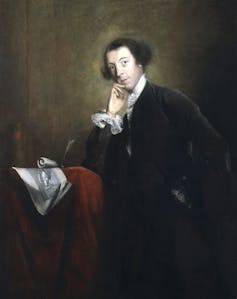
Montjuïc Cemetery, Barcelona's most haunting and attractive cemetery, is believed to be haunted. Famous spiritualists, serial killers, and the ghosts of the cemetery itself all inhabit this hill in their afterlife.
As night falls, the gravestones cast unsettling shadows and the whispers of eerie legends grow louder. Beyond the grave, the Montjuïc Cemetery holds tales of tragic love, mysterious apparitions and restless spirits that continue to fascinate locals and tourists alike. Situated on a hill overlooking the bustling city, this historic cemetery is not only the final resting place of the dead, but also a portal to a world where the supernatural meets reality.
Montjuïc Cemetery, located on the rocky slopes of Montjuïc Hill overlooking Barcelona's industrial port towards the Mediterranean Sea, is one of the largest cemeteries in the city. Founded in 1883, it is a labyrinth of streets and alleys where history intertwines with the supernatural.
The cemetery is of great importance to its inhabitants, as it is the final resting place of many renowned figures from the history of Barcelona. Today, the cemetery houses over a million burials and cremation ashes. From politicians and artists to writers and musicians, the cemetery houses the remains of those who left an indelible mark on the city. The grandeur of the mausoleums and tombstones reflects the outstanding importance of those buried inside.
Morrot's ghost in the Montjuïc cemetery
As the sun sets over the Montjuïc Cemetery, an unsettling feeling hangs in the air. Whispers of legends of ghosts and mysterious apparitions echo through the silent corridors. The Montjuïc Cemetery in Sants-Montjuïc, Barcelona is said to be haunted. One of the most terrifying tales revolves around the infamous “Ghost of Morrot.” Legend has it that the ghosts wandered the grounds in mourning.
There is Dalmau de Queral and Codina, who was the Count of Santa Coloma. He was Viceroy of Catalonia and in 1640 he became involved in the Reapers' Revolt. An livid mob captured him and lynched him at the foot of the cemetery hill. His legend is known as the Ghost of Morrot and is believed to haunt the cemetery.
The grave of Mrs. Amalia Domingo Soler
There are many fascinating graves in the cemetery, among them you can find, for example, the grave of Enriqueta Marti, also known as The Vampire of Raval for her crimes.
One of the strange graves that can be found going to Vial Sant Jaume in Agrupacio XI in grave no. 35. In this place lies Mrs. Amalia Domingo Soler. She was a writer, women's rights activist, and also a medium in the tardy 19th century.
Soler is renowned for establishing contact with Father Germano, a spirit who came to her and acted as her spiritual guide.
After her death, she was buried in a plot of land designated for people who were not morally in line with the times. It was a place for anarchists and defenders of the working class. It was also where executed people were buried, as well as Jews. The name Montjuïc itself means Mountain of Jews in Old Catalan.
The grave of the spiritualist Jose Maria Fernandes Colavida
Interestingly, Ms. Soler’s grave is located in close proximity to another spiritualist, Jose Maria Fernandes Colavida. Together, their graves create an atmosphere of otherworldly energy, attracting both paranormal enthusiasts and curious visitors.
Visitors to the site say that the graves in this area appear more cracked and disordered than they should be.
Bibliography:
13 Haunted Houses and Places in Barcelona That Will Scare You
7 Curiosities of Montjuïc: Cemeteries, Ghosts and Sundials – Barcelona Secreta
What secrets and mysteries does Montjuïc hide?
Image Source: Pixabay.com




